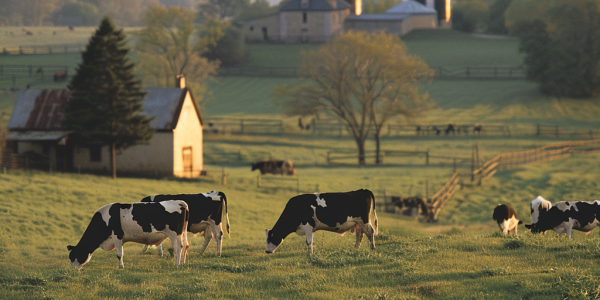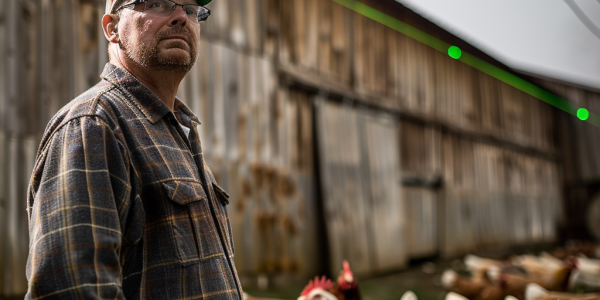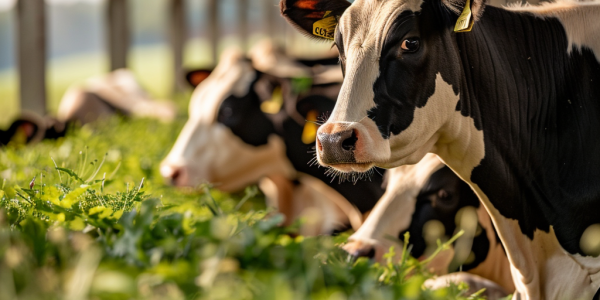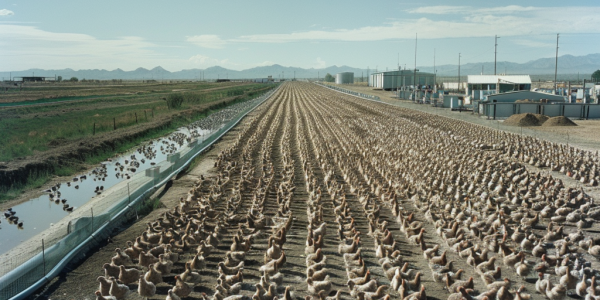Communication Challenges in H5N1 Outbreak Response
The H5N1 bird flu outbreak has raised concerns about communication strategies, echoing past issues seen during the Covid-19 pandemic. Federal agencies like the USDA have faced criticism for delayed and confusing information dissemination. Despite reassurances from the CDC, concerns about virus mutation and public health risks persist. Comparisons to the initial Covid-19 communication challenges highlight the importance of clear, timely communication in managing public health crises.
Feline Fatalities Rise as H5N1 Bird Flu Spreads in the United States
Three more cats have tragically succumbed to the H5N1 bird flu in the United States, bringing the total known feline fatalities to 10 since the virus spread to dairy cows earlier this year. Concerns are mounting over the potential underreporting of infected barn cats due to limited testing, as the global circulation of the H5N1 clade 2.3.4.4b strain sparks fears of potential human-to-human transmission. The U.S. Department of Agriculture has disclosed the detection of bird flu in unpasteurized milk from ailing cows in Kansas and Texas, with outbreaks on dairy farms surging to 42 across 9 states.
CDC Faces Opposition from Texas and Idaho Officials in Bird Flu Investigation
The CDC faces opposition from state officials and dairy farmers in Texas and Idaho as they investigate dairy farms for a potential bird flu outbreak. Some officials view the CDC’s actions as overreach, while others argue for the USDA to take the lead. The clash highlights challenges in managing health crises and differing perspectives on federal agency roles.
Fragments of Bird Flu Virus Found in Pasteurized Milk Samples Across US
Recent findings by the US FDA reveal fragments of non-infectious bird flu virus in pasteurized milk samples, sparking concerns about transparency in sharing data on bird flu in farm animals. While the milk supply remains safe, experts stress the importance of proper milk processing to prevent health risks. Consumers are urged to choose pasteurized milk products to mitigate the spread of infections and ensure public health safety.
Florida Dolphin Infected with Highly Pathogenic Avian Flu
University of Florida researchers discover a Florida dolphin infected with highly pathogenic avian influenza virus (HPAIV), marking one of the first instances of mammals being affected by this virus. The case unfolded in Dixie County, Florida, with subsequent examinations confirming the presence of HPAIV. Further investigations reveal the virus subtype and highlight the importance of continued research in understanding its origin and transmission.
U.S. Dairy Industry on High Alert for H5N1 Virus Threat
The U.S. dairy industry is facing a new threat with the spread of H5N1 virus, prompting experts to call for decisive action. Veterinarians like Kay Russo emphasize the need for a proactive approach and comprehensive plan to combat the virus in dairy and other livestock sectors. Stay informed on the industry’s response to this urgent situation.
Concerns Over Global Production Capacity for H5N1 Vaccine in Potential Bird Flu Pandemic
Concerns arise over global production capacity as massive amounts of H5N1 vaccine may be needed in the event of a bird flu pandemic. While the current system for producing flu vaccines is well-established, the global production capacity falls short of being able to vaccinate a significant portion of the population within the first year of an outbreak. Comparisons to the rapid production of Covid-19 vaccines raise questions about the ability to respond effectively to an H5N1 pandemic, highlighting the critical global health challenge of rapidly responding to emerging infectious diseases.
Poultry Growers Innovate to Combat Avian Flu Threat
With the spring season approaching, poultry growers are taking innovative steps to protect their flocks from the threat of avian flu. From using laser systems to deter wild birds to deploying drones and decoy predators, farmers are leaving no stone unturned in their efforts to safeguard their poultry. The recent outbreaks have impacted both small and large-scale operations, with industrial farms and egg-producing chicken facilities bearing the brunt of the losses.
Bird Flu Spreads to Dairy Cows Across Eight States in the US
A recent outbreak of bird flu has spread to dairy cows in the United States, affecting over two dozen herds across eight states. The virus, identified as Type A H5N1, has been found in cattle for the first time, raising concerns about food safety and production. Despite the spread of the virus to farm animals, authorities assure consumers that there is no immediate threat to human health or the safety of dairy products. States affected by bird flu in dairy cows include Idaho, Kansas, Michigan, New Mexico, North Carolina, Ohio, Texas, and South Dakota. While the virus has not mutated to facilitate human-to-human transmission, restrictions on the import of dairy cattle from affected regions have been imposed in 17 states to prevent the spread of the virus within herds. Pasteurization effectively eliminates the bird flu virus from food products, ensuring the quality and safety of dairy products.
New Mexico Confirms Third Case of Highly Pathogenic Avian Influenza in Poultry
New Mexico confirms its third case of highly pathogenic avian influenza in poultry, with a commercial hatchery in Roosevelt County reporting 51,800 affected birds. USDA APHIS is monitoring the situation, emphasizing the need for biosecurity measures to prevent further spread. Stay informed with WATTPoultry.com’s interactive map on avian influenza outbreaks.










